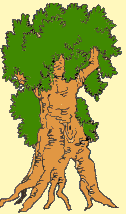RICINUS COMMUNIS
RICINUS COMMUNIS
RICINUS COMMUNIS
French: Ricin; Hausa: Sermang, kulâ-kulâ, kosaré, kulakula; Zarma: zurma;
Wolof: Kerkhem; padeulopoli
Description: shrub 3-12m high, often branched from the base, with erect branches and a flared port. There are many cultivated varieties, different both by their vegetative apparatus, by the color of the leaves, and by the size and color of the seeds. The bark is beige, green-brown, or purple with yellowish branches. The twigs are glabrous, oval, broad sheathing the buds. The leaves are alternate and more or less palmatilobed, with 5 to 11 toothed lobes. The blades vary in color, depending on the variety, glaucous green to purple or reddish. The petioles are 15 to 30cm long. The vein is webbed, with 5 to 11 primary veins, one per lobe. And 8-10 secondary veins. The flower contains numerous yellowish-white stamens with a pedicel 3 to 5mm long, with 3 reddish feathery styles, pedicel 8-10mm long. The fruit is a globular, smooth, or thorny capsule, 1.6 to 2.5cm, opening into 3 bivalve shells containing seeds of varying size.
Flowering takes place rather at the end of the dry season, and in the rainy season.
it is a spontaneous species or cultivated on wasteland. It is pantropical, originating in Ethiopia and it is very widespread and common.
Medicinal Uses: The bark is used to heal wounds. The leaves are emollient and are used for wounds, wounds, lice, and scabies. The combination of leaves and flowers is effective for ascites, gonorrhea, asthma, headaches, diarrhea, constipation, and to treat female infertility. The seeds are purgatives, dewormers, emetics, emollients, insecticides, and coagulants. the root is effective for dental caries and diabetes.
Plant for magico-religious uses, cultivated as an ornament and especially for its uses in the pharmacopeia. It provides a very hardwood which is used as posts. The seed (oil) is used as a lubricant and is a good insecticide against termites
Add a comment























